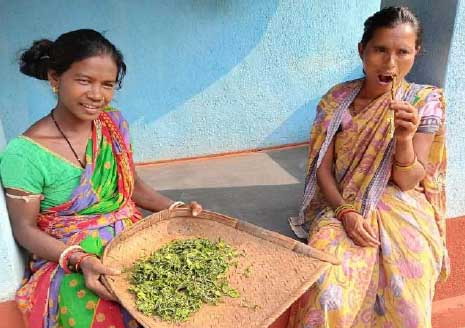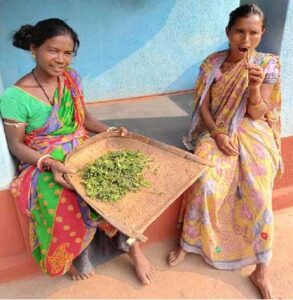
By T. Jyoti Rao, Research Scholar; and Dr. Madhulika Sahoo, Assistant Professor; Department of Anthropology,
MaaManikeshwari University, Odisha, India
Heatstress includes a series of conditions where the body is under stress from overheating. Every year, because of heat, India loses thousands of people during the summer. In a western city of India, the heat-related death count in the year 2010 was nearly 1400, and in 1998, Odisha lost 2042 people (Swain 2019). Odisha experiences heatwaves from March until June, with extremes in May. Odisha is projected to see 42,334 excess climate-related deaths due to the increase in temperature till now (Sahu 2023).
Kalahandi district is quite famous for its scorching weather, especially during the summer when the maximum temperature is 45ͦC. This study aims to explore the perception of the causes and effects of heatwaves and explore the coping mechanism by the Kondh tribes of Lanjigarh block’s “Batelima” Panchayat.
Causes and Experiences of Heatwave
Kutia Kondh spend most of their time in the forest for MFP, i.e. Kendu leaves, Siali leaves, Sal seeds, Mahua flowers, tamarind, etc. and found it difficult to deal with the searing heat in summer. Tribal homes would earlier be made of mud, baked clay tiles or paddy straws, which were eco-friendly and relatively cooler during summer and have been replaced by concrete houses given under government schemes.
| Food / Fruits | Local Name | Scientific Name |
| Finger millet/ Ragi | Mandiacopeh/Dorcopeh | Eleusine coracana |
| Maize/Corn | Maja/ Jana | Zea mays |
| Kendu /Tendu | Kendu | Diospyros melanoxylon Roxb |
| Ram phal/ Bullock’s heart | Ram phal | Annona reticulata |
| Lemon | Lembu | Citrus limon |
| Kuler Saag/ Koinar Saag | Borda saag | Bauhinia variegata |
| Gandhri saag |
People witnessed extreme heat in summer for nearly 6 months over 10 years. The amount of rain and cold has decreased due to the hills and deforestation for the Industry like “Vedanta”. The level of groundwater could actually turn out to be a mirage in the hilly parts of the area. Water scarcity is a major problem with no water bodies like ponds and wells. Participants noted an increase in incidents of sunstroke, problems like dehydration, heat cramps, and heat exhaustion during heatwaves were common. In order to protect themselves from heat stress the tribal people adopt various coping mechanisms.
Coping Mechanism

People use clay and cow dung in plastering the walls and floors for cooling purposes and make heat-resistant houses by using coconut, palm leaves, paddy straws and other natural fibres as reinforcements in mud houses which are low-weight, and breathable.
Applying castor oil to hair and feet for cooling purposes, using thin cotton clothes, covering the whole body while expo
sured to the sun and using wet towels around the head and face at work are the remedies followed by the tribal people.
Millets are among the major crops cultivated by the tribes, it is a staple food and central to their culture. People cultivate (Ragi, Maka, Kusla, Rice, Kandul, Kating, Gurji, Jawri). Ragijau or Mandiapeja (Dorcopeh) is incorporated as a regular diet in the Kutia Kondh tribes as it has a naturally cooling effect which mitigates excess heat, and acidity and provides stability and energy.
The practice of eating “Kushlabhat” (a local grain), and “pakhal” (fermented water rice) during summer is a relief from extreme hot temperatures and it saves from dehydration. Local green leaves i.e. ‘Gandhri sag’ and ‘Borda sag’ (Bauhinia variegata) are often taken as leafy vegetables. They frequently use summer drinks such ‘TaadiKallu’ (Palm wine). The table showcases the various foods consumed by the tribal people to protect themselves from the heat stress.
References:
Disclaimer: The views expressed in this piece are those of the author/s and do not necessarily reflect the views or policies of AIDMI.